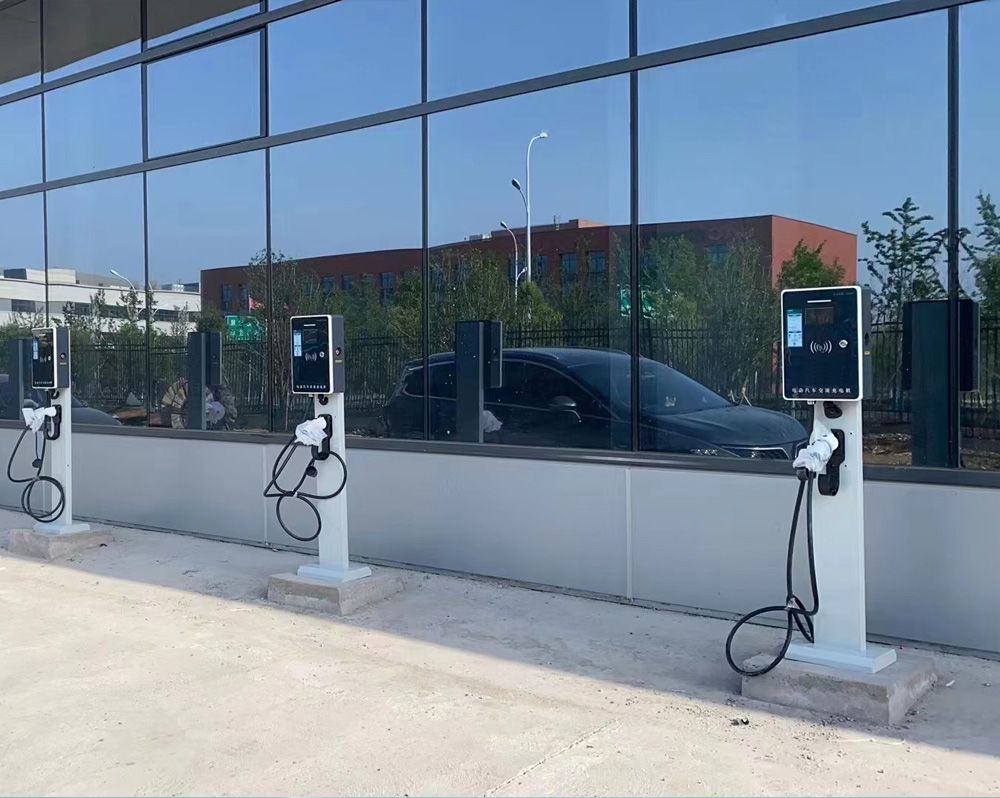Electric Vehicle Charging Stations: The Future of Green Mobility in Russia and Central Asia
With the growing global focus on sustainability and environmental protection, electric vehicles (EVs) are becoming the mainstream choice for future mobility. As a key infrastructure supporting the operation of EVs, electric vehicle charging stations are rapidly being developed worldwide. In Russia and the five Central Asian countries (Kazakhstan, Uzbekistan, Kyrgyzstan, Tajikistan, and Turkmenistan), the rise of the electric vehicle market has made the construction of charging stations a top priority for both governments and businesses.
The Role of Electric Vehicle Charging Stations
EV charging stations are essential for providing the necessary energy to electric vehicles, serving as a key infrastructure for their proper operation. Unlike traditional gas stations, charging stations supply power to electric vehicles via the electrical grid, and they can be installed at various locations such as homes, public spaces, commercial areas, and highway service zones. As the number of electric vehicle users grows, the coverage and quality of charging stations will be key factors in determining the widespread adoption of EVs.
Development of Charging Stations in Russia and Central Asia
With increasing environmental awareness and supportive government policies, the electric vehicle market in Russia and Central Asia is expanding rapidly. Although the sales of electric vehicles in Russia are still in the early stages, the government and businesses have started to pay significant attention to the market. The Russian government has implemented several incentives to promote the construction of EV charging stations, aiming to lay a solid foundation for the future of electric mobility.
In the five Central Asian countries, the electric vehicle market is also beginning to take off. Kazakhstan has plans to establish more charging stations in major cities such as Almaty and Nur-Sultan. Uzbekistan and Kyrgyzstan are actively advancing clean energy projects, including the development of electric vehicle charging infrastructure. Although the electric vehicle market in these countries is still in its infancy, as policies and infrastructure continue to improve, the region will be well-supported for the future of green mobility.
Types of Charging Stations
Electric vehicle charging stations can be divided into several categories based on the charging method:
Slow Charging Stations(AC Charging Stations): These stations provide lower power output and are typically used for home or commercial purposes. Charging times are longer, but they can meet daily charging needs through overnight charging.
Fast Charging Stations(DC Charging Stations): These stations offer higher power output, allowing vehicles to charge in a shorter amount of time. They are typically found in highway service zones or commercial areas, providing convenient charging for long-distance travelers.
Ultra-Fast Charging Stations(360KW-720KW DC EV Charger): The most advanced charging technology, ultra-fast charging stations can provide large amounts of power in very short periods. They are ideal for high-traffic locations or major transportation hubs, offering rapid charging for long-distance EV drivers.
The Future of Smart Charging Stations
With the advancement of technology, smart charging stations are beginning to transform the charging experience. Modern EV charging stations offer not only basic charging capabilities but also a range of advanced features, such as:
Remote Monitoring and Management: Using Internet of Things (IoT) technology, charging stations can be remotely monitored and managed, allowing operators to keep track of equipment status and perform diagnostics or maintenance as needed.
Smart Payment Systems: These charging stations support multiple payment methods, such as mobile apps, credit cards, etc., providing users with a convenient and seamless payment experience.
Automated Scheduling and Charging Optimization: Smart charging stations can automatically allocate resources based on the battery status and charging requirements of different vehicles, optimizing efficiency and resource distribution.
Challenges in Charging Station Development
Although the construction of EV charging stations provides significant benefits for green mobility, there are still several challenges in Russia and Central Asia:
Insufficient Infrastructure: The number of charging stations in these regions is still far from sufficient to meet the growing demand for electric vehicles. Charging station coverage is particularly lacking in remote or rural areas.
Power Supply and Grid Pressure: EV charger requires substantial amounts of electricity, and some regions may face challenges with their power grids being able to meet the high demand. Ensuring a stable and sufficient power supply is a key issue.
User Awareness and Adoption: As the electric vehicle market is still in the early stages, many potential users may lack understanding of how to use and maintain charging stations, which could hinder the widespread adoption of EVs.
Looking Ahead: Opportunities and Growth in Charging Station Development
As the electric vehicle market rapidly expands, the construction of EV charging stations will become a crucial factor in advancing green mobility in Russia and Central Asia. Governments and businesses should strengthen collaboration and optimize policies and support measures for charging station development to improve coverage and convenience. Additionally, with the help of smart technologies, the efficiency of station management and services will significantly improve, driving the growth of the electric vehicle industry.
For Russia and the Central Asian countries, charging stations are not just essential infrastructure for supporting EVs; they are critical tools for advancing clean energy usage, reducing carbon emissions, and enhancing energy efficiency. As the EV market matures, charging stations will become an indispensable part of the region’s smart transportation systems, fostering green mobility and sustainable development.
Post time: Jan-16-2025








